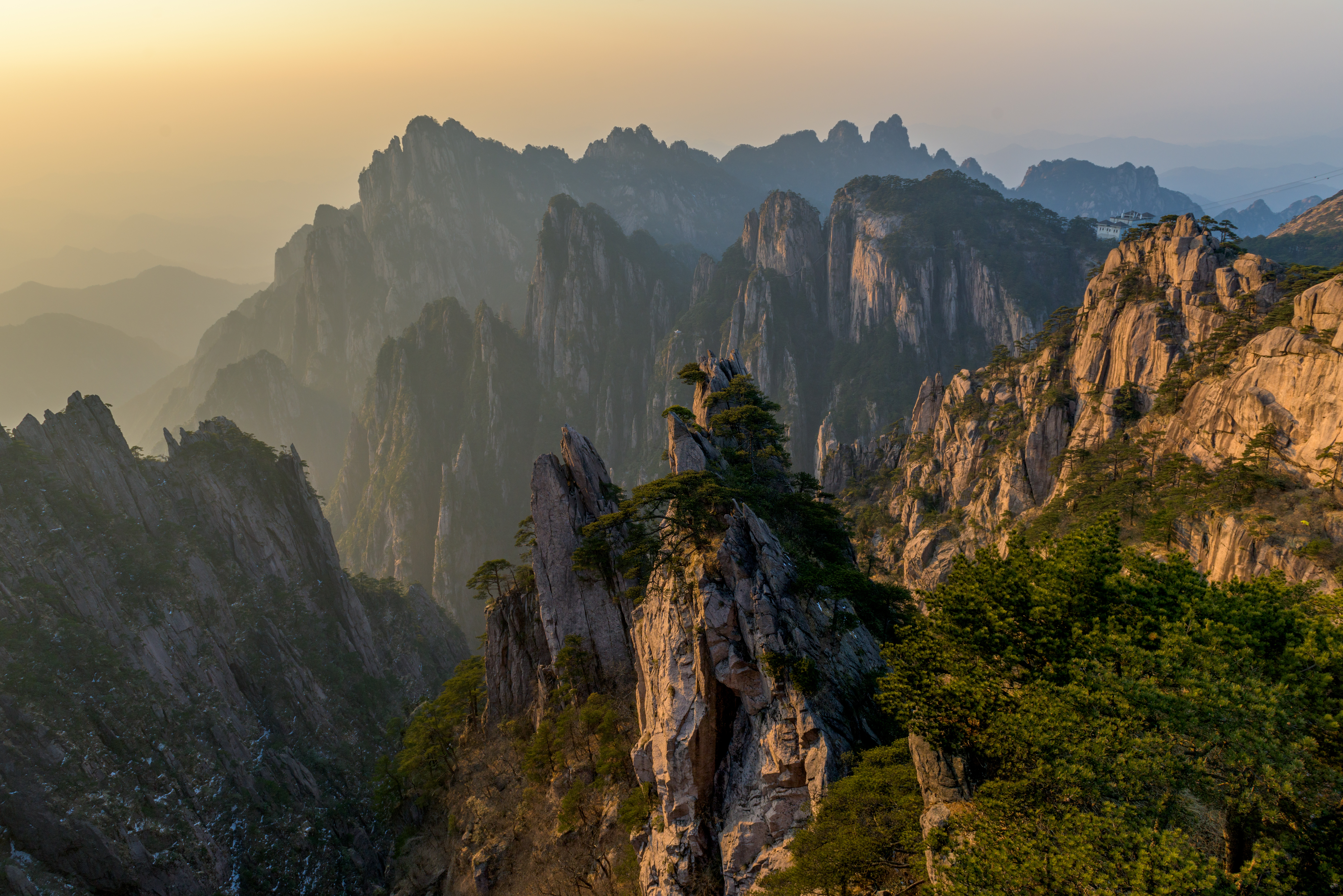The Huangshan Mountains are known for four wonders - strangely-shaped pines, grotesque rocks, a sea of clouds, and hot springs. The hot springs, found in various locations throughout the area, were widely popular and brought many benefits to those who used them. Unlike in Europe, where the church’s views meant less people were using hot springs, during the 5th and 6th centuries hot springs did not lose their popularity in this part of the world, becoming more widely used.
The History
Huangshan is a mountain range in the southern Anhui Province in eastern China. Meaning ‘the Yellow Mountain’, Huangshan boasted springs in three different locations throughout the area. One was found at the bottom of the Yellow Mountains, one about 15km away from the base, and one in the downtown area of the city. The main, most popular hot spring is the one at the bottom of the range – Piaoxue Hot Spring. The others closed to visitors in recent centuries, whereas this spring is still in operation today.
The Piaoxue Hot Spring has been around for over 1,000 years, with history dating it back to around 600 A.D. Throughout the years, it was given different names. Because the spring was developed by the Tang Dynasty, many people referred to it as the Tang Spring. Others named it after the source of the water, believed to be from the Cinnibar Peak, and so referring to it as the Cinnabar Springs.
The springs are about 2,000 feet above sea level, and average at approximately 42°C. They are rich in minerals, making them known for their therapeutic effects on different illnesses. Today, the springs have many different pools which are filled with aromas and scents with each one having its own purpose.

The Benefits
The main benefits derived from the waters of Piaoxue Hot Springs were:
-
Muscle Relaxation
Like with previous periods in history, many people sought out the hot springs of Huangshan to ease aching muscles. Whether the aches were due to physical exertion or due to an illness or chronic pain, the soothing waters of the springs enabled the user to release the tension that they experienced.
-
Smoothen Skin
Even back in 600 A.D., people wished to clear the imperfections of their skin. Whether they suffered with dry skin or conditions such as psoriasis or eczema, the waters of the thermal springs in Huangshan often helped. This is due to the minerals such as silica and sulfur in the springs.
-
Treating Metabolic Disorders
Depending on the temperature of the water in the springs, those who suffered with metabolic disorders found that their condition improved after a soak. Whether their metabolism was working too much or not enough, the regular dips in the Piaoxue Hot Springs resulted in significant changes to their health.
-
Easing Cardiovascular Disease
Hot water therapy is known for easing pressure on the heart and cardiovascular system. The immersion into hot water increases the bathers heart rate and lowers their blood pressure, making the heart stronger and less at risk of disease. Those who bathed in the Huangshan Springs in the 7th century benefited from these affects, which encouraged more and more people to use hot springs.
These benefits made the use of the hot springs in Huangshan very popular, particularly the Piaoxue location. Those who found relief from aches, pains, and ailments often returned for regular use. The more people that found solace in the springs, the more visitors they received. This spurred on the research and exploration into the benefits of hot springs and hydrotherapy. To this day, many people still visit the location for vacations to enjoy the benefits of the spring. Like Greece and Italy, resorts and spas have been constructed to attract visitors to the area for therapeutic soaks.
Eager to know more? Download our infographic and sign up for our newsletter to be notified of the next blog post in our timeline!











